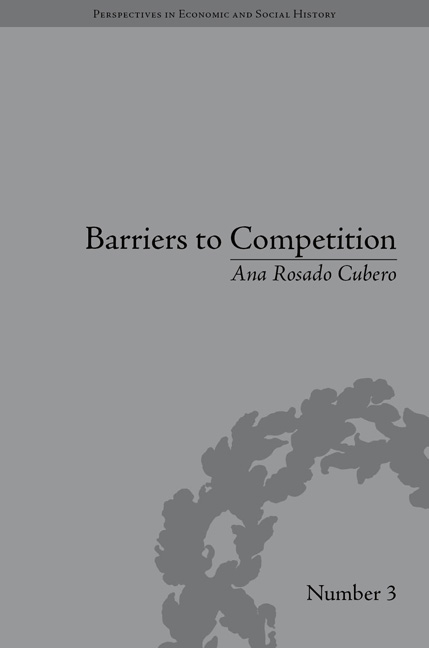Book contents
- Frontmatter
- CONTENTS
- Dedication
- Acknowledgements
- Introduction
- 1 Imperfect Competition in Economic Theory Before 1956
- 2 Barriers to Entry: the Late 1950s and the 1960s
- 3 The Harvard and Chicago Schools: Two Ways of Studying Barriers to Entry
- 4 Barriers to Entry in the 1970s
- 5 Barriers to Entry in the 1980s
- 6 Barriers to Entry: Current Analysis
- Conclusion
- Appendix: Tables
- Notes
- Works Cited
- Index
4 - Barriers to Entry in the 1970s
- Frontmatter
- CONTENTS
- Dedication
- Acknowledgements
- Introduction
- 1 Imperfect Competition in Economic Theory Before 1956
- 2 Barriers to Entry: the Late 1950s and the 1960s
- 3 The Harvard and Chicago Schools: Two Ways of Studying Barriers to Entry
- 4 Barriers to Entry in the 1970s
- 5 Barriers to Entry in the 1980s
- 6 Barriers to Entry: Current Analysis
- Conclusion
- Appendix: Tables
- Notes
- Works Cited
- Index
Summary
Introduction
This chapter refers to the economic literature about barriers to entry during the 1970s; no Guidelines were published at this time. The 1968 Guidelines were still enforced. The organization of this chapter is centred on the analyses of the four main barriers to entry, because the changes that occurred at this time were made in order to concentrate scientific efforts on demonstrating with more worthwhile theoretical approximations the existence of all four kinds of barrier. The present chapter covers new theoretical models that tried to disconfirm the Bain-Sylos Labini paradigm. Some, but not all, of these came from the University of Chicago. The old Bain framework began to be considered unsuccessful and new theoretical proposals were published. At the same time, several articles were published at Harvard University trying to prove the existence of barriers to entry.
During the 70s the analysis of barriers to entry changed, mainly because the different researchers chose only one of Bain's proposed routes. For instance and maintaining an order within the large number of articles this one route produced, it may be useful to pause before considering the following four barriers: the use of excess capacity in the production system, industrial concentration and its consequences for the share in profits, advertising and new models of entry.
These years presented a new battle between the Harvard School and the Chicago School. The winner was the Chicago School because during the 1980s neoclassical theory was predominant in the economic background. The Chicago School was beginning to demonstrate that the oligopoly theory developed by the Harvard School through the limit price was weak.
- Type
- Chapter
- Information
- Barriers to CompetitionThe Evolution of the Debate, pp. 85 - 104Publisher: Pickering & ChattoFirst published in: 2014



